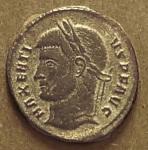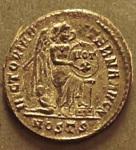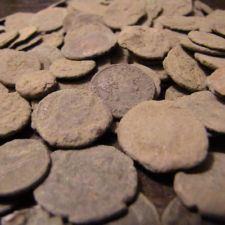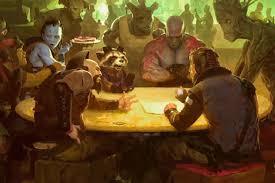My main life is not blogging but numismatics; I’m a full-time coin dealer and still a collector too. What I probably love most is Roman coins; and recently obtained one that particularly pleased me. I thought I’d share why, to give you some flavor of this esoteric pursuit.
I especially enjoy Fourth Century Roman, after Diocletian’s reform, which actually introduced a parade of routinized, repetitive, boring coin designs. But there are interesting variations, and also some completely oddball types. And, in the context of all the routine ones, those oddballs really have pizzazz.



Ancient coins in more typical condition
I’ve mentioned condition. This is extremely important in numismatics generally, but especially for ancient coins, most of which were found in the ground. Gold and silver can survive pretty well, but bronze is very susceptible to corrosion. Vast quantities have been recovered, but only a tiny percentage in top quality.
Which is what I go for. I never disparage anyone collecting run-of-the-mill coins, of course they’re still very historical and all. But for my collection, I am an insufferable condition snob. I’ve noticed even great collections, when auctioned, usually contain some blah specimens. Not mine.
Yet contradictorily for such a picky connoisseur, I’m also a bottom-feeder/bargain-hunter/cheapskate. I could actually afford to buy most any coin I’d like, but I see no challenge in that; anybody can throw money around. The sport of the thing is to find coins at what I consider favorable (well, cheap) prices. And that can be done because for ancient coins in particular, value isn’t cut-and-dried, with pricing highly variable. Also, collecting this way, effortfully, makes each acquisition, and the entire collection, more meaningful to me as an achievement
As noted, the great majority of Fourth Century Roman coins are routinized types, and while again the percentage in top quality is tiny, it’s a percentage of a very large population; so you can find them at surprisingly reasonable prices (like $20 to $50). However, for less usual types, the low survivability rate makes topnotch specimens truly elusive.
The tension between inclusivity and quality poses dilemmas. An example was a quite rare Constantine I “Adventus” follis. Normally I’d only collect such coins in “Extremely Fine” grade. This one was lovely, but only Very Fine, thus without the full detailing I look for. Yet such an important and cool type. After agonizing, I did keep it for my collection. (Similar dilemmas can afflict a choice between two coins. One might be better on one side but worse on the other; one with more detail, the other a more attractive patina; et cetera.)

The Maxentius wasn’t the costliest. That was an Augustus denarius with bull reverse, and a great portrait, but the back messed up, at $685. It was quite a job bargaining him down from $800, especially that last $15. I was betting I could improve the look of the back, and it did turn out beautifully. Such cleaning and similar restorative work is another part of my fun with ancient coins; it’s a real art (and also a big aspect of acquiring good coins on the cheap). Indeed, truthfully, I enjoy coins’ “objectness,” the whole preservation thing, even totally divorced from their cultural/historical significance.
Maxentius was $115. I wouldn’t have paid much more. It too had a condition issue, some encrustation. Sometimes its removal can uncover corrosion beneath; but this coin proved to have just the kind of encrustation you want, basically just impacted dirt harmlessly removable.

And, yes, it makes my cut. Honestly, I’d like a little more hair detail on the beard, but let’s not be ridiculous, it’s a great coin, and a wonderful addition to the Frank S. Robinson collection.
P.S. Click here for my current unreserved auction of ancient coins, with photos.
